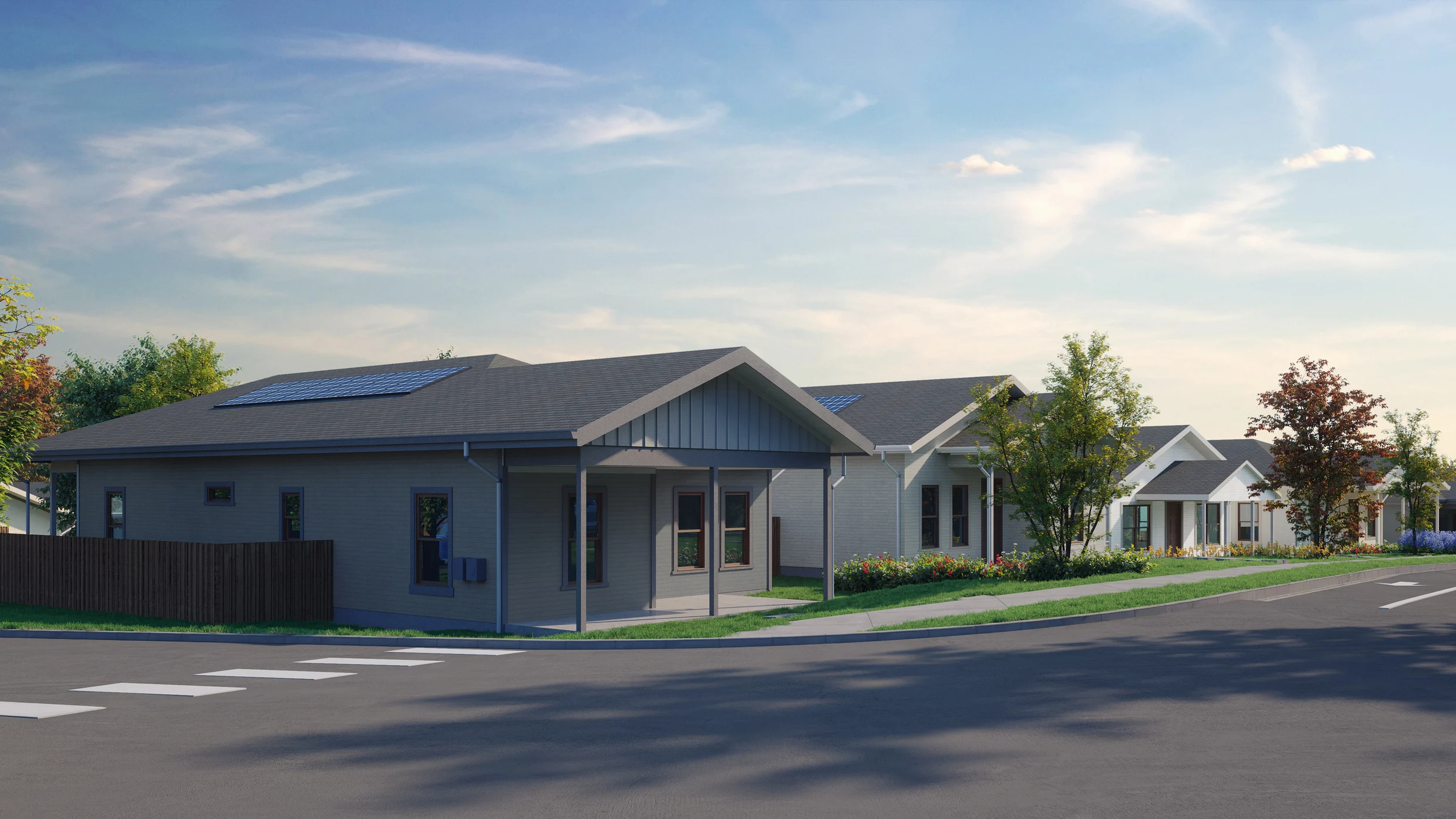
"A typical three-bedroom house in Austin, Texas, can sometimes rack up monthly utility bills of $200 or $300 in the summer. But in new homes under construction in a nearby suburb, residents will owe little beyond the basic utility connection fee. The homes, built by Habitat for Humanity, tap into a shared geothermal system in a fully geothermal neighborhood. Heat pumps in each house connect to pipes that loop hundreds of feet underground, making use of the earth's steady temperature for heating and cooling."
"The houses are also built to use as little energy as possible, with features like deep eaves that shade the interior and reduce the need for air-conditioning. Solar shingles on the roofs produce enough power to match each home's expected electricity use. "Our goal is to make sure that they have a very, very low energy bill at the end of the day," says Billy Whipple, chief impact officer at Habitat for Humanity's Austin office."
Affordable homes in a suburb of Austin use a shared geothermal system and on-site solar to minimize energy costs. Heat pumps in each house connect to underground pipe loops that exploit stable ground temperatures for heating and cooling. Deep eaves and other efficiency features reduce cooling demand while solar shingles generate enough electricity to meet expected home use. Habitat for Humanity builds these homes to lower both mortgage and ongoing utility and maintenance costs. Neighborhood-scale geothermal infrastructure, drilled and connected by a company, lowers per-household installation costs compared with individual systems that can cost up to $45,000.
Read at Fast Company
Unable to calculate read time
Collection
[
|
...
]